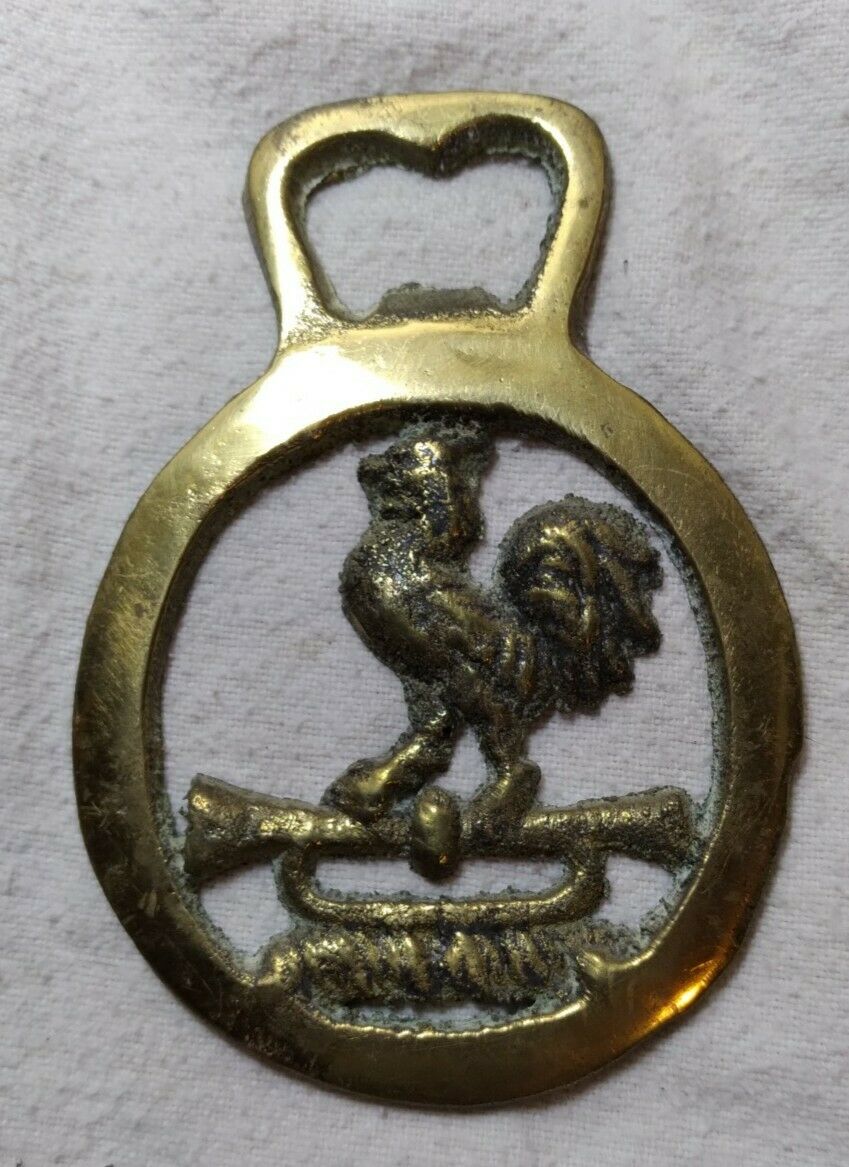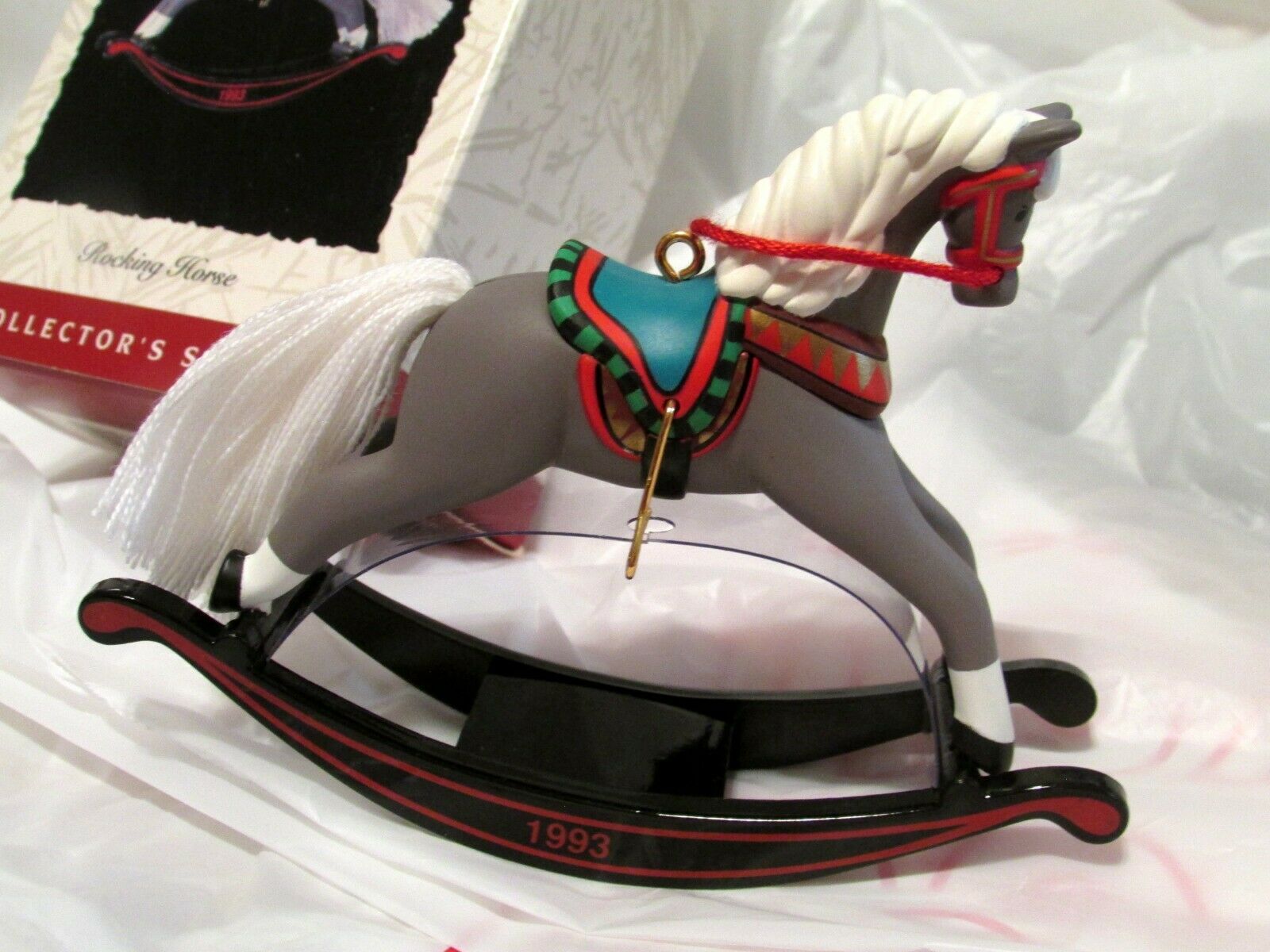-40%
ANTIQUE "REARING HORSE" EQUESTRIAN BRASS MEDALLION "HORSE BRASSES"
$ 7.89
- Description
- Size Guide
Description
Photographs throughout Ad:Offered for auction from a recent estate sale is an excellent example of Antique Equestrian Horse Brasses as defined below an
ORIGINAL ANTIQUE CAST BRASS HORSE MEDALLION “REARING HORSE DESIGN” WITHOUT ORIGINAL “GETTS” REMAINING ON BACK as photos show.
This wonderful Excellent Condition Non - Excavated Brass Horse Medallion measures 3 5/8 Inches in height and 3 inches in width. Its weight is 1.96 Oz.
A horse brass is a brass plaque used for the decoration of horse harness gear, especially for shire and parade horses. They became especially popular in England from the mid-19th century until their general decline alongside the use of the draft horse, and remain a collectors item today.
As photos show I have taken photos outdoors in direct sunlight and indoors to show the best of this early Horse Brass. Is is as found uncleaned or unpolished. Patina is present particularly in recesses of the item as photo shows. A pleasant patina is present on the front as photo shows. On the back there appears to be a trademark stamping but most if it is unreadable. The beginning letters of the trademark are WET??? And under this a series of letters also unreadable. Please view photos for condition. Photos have been taken indoors and in direct sunlight outdoors as noted above.
Below I have added additional information on the History and designs of the Brass Horse Medallion.
Phalera is the archaeological term for equivalent disks, which were popular in Iron Age Europe, including Ancient Rome.
In ancient Rome, horse harnesses were sometimes embellished with horse brasses known as phalerae, normally in bronze, cut or cast in the shape of a boss, disk, or crescent, most often used in pairs on a harness. In medieval England, decorative horse brasses were in use before the 12th century, serving as talismans and status symbols, but extensive, original research by members of the National Horse Brass Society has shown that there is no connection whatsoever between these bronze amulets to the working-class harness decorations used in the mid-19th century which developed as part of a general flowering of the decorative arts following the Great Exhibition.
There are a great deal of die-hard, unfounded myths surrounding these decorations such as their usage as amulets to ward off the "evil eye". The most popular size is 3 × 3½ inches of flat brass with a hanger by which the brass is threaded onto a horse harness strap, known as a Martingale. In England many of these items of harness found their way into country public houses as the era of the heavy horse declined, and are still associated today as a pub decoration. By the late 19th century heavy horses were decorated with brasses of all kinds and sizes. During this era working horse parades were popular throughout the British Isles and prize or merit awards were given, some by the Royal Society for Prevention of Cruelty to Animals (RSPCA). Horse brasses were often highly prized by the "carters", who decorated their horse with them. Other horse brass subjects include advertising, royalty commemoration, and in later years, souvenir brasses for places and events, many of which are still being made and used today.
Below additional information on Horse Brasses from “The National Horse Brass Society”
The earliest method of producing horse brasses in quantity was to cast them in sand. The original patterns were modeled in lead by a pattern maker for use in the casting process. These lead patterns were then pressed into sand filled boxes, about 10 patterns to a box. Channels were formed in the sand to connect each indentation of a pattern so that the molten metal could run into each impression in turn. The rough castings were then polished to give a smooth surface. Originally this was done by clamping the brass into a vice, using two projections especially cast into the back of the brass for this purpose. The face of the tightly held brass could then be filed and polished. After polishing, the projections were cut off and their remains can usually be seen on old cast brasses but not present on this item offered for auction.
By the turn of the Century, sanding and polishing machinery had superseded hand filing and polishing so the projections became superfluous and were removed from patterns. The hand filing and fettling of the early cast brasses gave them a superior finish not seen on the later, mass produced ones.
Machine-stamping of brasses from sheet metal commenced about 1880. Matthew Harvey's was one of the leading firms in this field of manufacture. The earliest method was to stamp out the pattern, one punch at a time, using a fly press. These early stamped brasses can be recognized by the irregularities in the spacing of the design. In later years, when the fashion for horse brasses was at its height, it became more economically viable for a few of the larger manufacturers to have more costly tools made which could stamp out the complete design in one hefty blow. Those later stamped brasses are recognizable by the symmetry of the design, a feature lacking in the earlier stampings.
The smaller manufacturers continued to produce brasses using the older casting methods and when the demand for heavy horse harness decorations began to dwindle after the First World War it was the production of machine stamped brasses that was to suffer most the casting of brasses continued
Most cast brasses display the small stubs on the reverse commonly known as "getts", which was probably brass casters jargon for these projections (which were originally an inch or two long), that were needed to, "get hold" of the brass in a vice, in order to finish it with a file. These take many forms although some relatively early brasses do not display these projections at all and were either obliterated completely (when more time was allowed to finish them) or in some cases, perhaps the casting channel or "sprue" issued from the top of the hanger allowing easier and more complete removal.
I will accept PAYPAL. Items will be shipped first class mail usually next day after payment of Paypal, packaging and mail .45.
I will ship internationally, payment must be in US funds, Paypal. I will ship world wide International first Class Mail 1 Medallion for .47. This increase is due to the new postal service rates.












